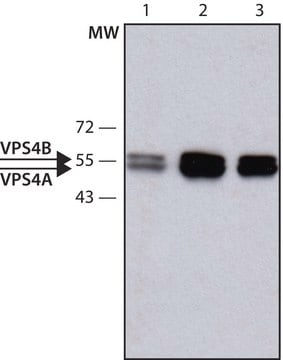ABE387
Anti-ATF4 Antibody
serum, from rabbit
Synonym(s):
Cyclic AMP-dependent transcription factor ATF-4, cAMP-dependent transcription factor ATF-4, Activating transcription factor 4, Cyclic AMP-responsive element-binding protein 2, CREB-2, cAMP-responsive element-binding protein 2
DNA-binding protein
About This Item
Recommended Products
biological source
rabbit
Quality Level
antibody form
serum
antibody product type
primary antibodies
clone
polyclonal
species reactivity
human
technique(s)
ChIP: suitable
western blot: suitable
isotype
IgG
NCBI accession no.
UniProt accession no.
shipped in
wet ice
target post-translational modification
unmodified
Gene Information
human ... ATF4(468)
General description
Immunogen
Application
Chromatin Immunoprecipitation Analysis: A representative lot from an independent laboratory detected ATF4 in HEPG2 and MEF cell lysates (Shan, J., et al. (2012). J Biol Chem. 287(43):36393-36403.).
Epigenetics & Nuclear Function
Chromatin Biology
Quality
Western Blot Analysis: A 1:2,000 dilution from a representative lot detected ATF4 in 10 µg of HisOH treated HepG2 cell lysate (HisOH was used to induce cellular stress mediated eIF2a phosphorylation, allowing for subsequent detection of ATF4. For enhanced performance, end-users may try higher dilutions of this antibody. For better results, 1% SDS was used during the secondary antibody incubation step.)
Target description
Physical form
Storage and Stability
Handling Recommendations: Upon receipt and prior to removing the cap, centrifuge the vial and gently mix the solution. Aliquot into microcentrifuge tubes and store at -20°C. Avoid repeated freeze/thaw cycles, which may damage IgG and affect product performance.
Analysis Note
HisOH treated HepG2 cell lysate
Disclaimer
Not finding the right product?
Try our Product Selector Tool.
recommended
Storage Class Code
10 - Combustible liquids
WGK
WGK 1
Certificates of Analysis (COA)
Search for Certificates of Analysis (COA) by entering the products Lot/Batch Number. Lot and Batch Numbers can be found on a product’s label following the words ‘Lot’ or ‘Batch’.
Already Own This Product?
Find documentation for the products that you have recently purchased in the Document Library.
Our team of scientists has experience in all areas of research including Life Science, Material Science, Chemical Synthesis, Chromatography, Analytical and many others.
Contact Technical Service








